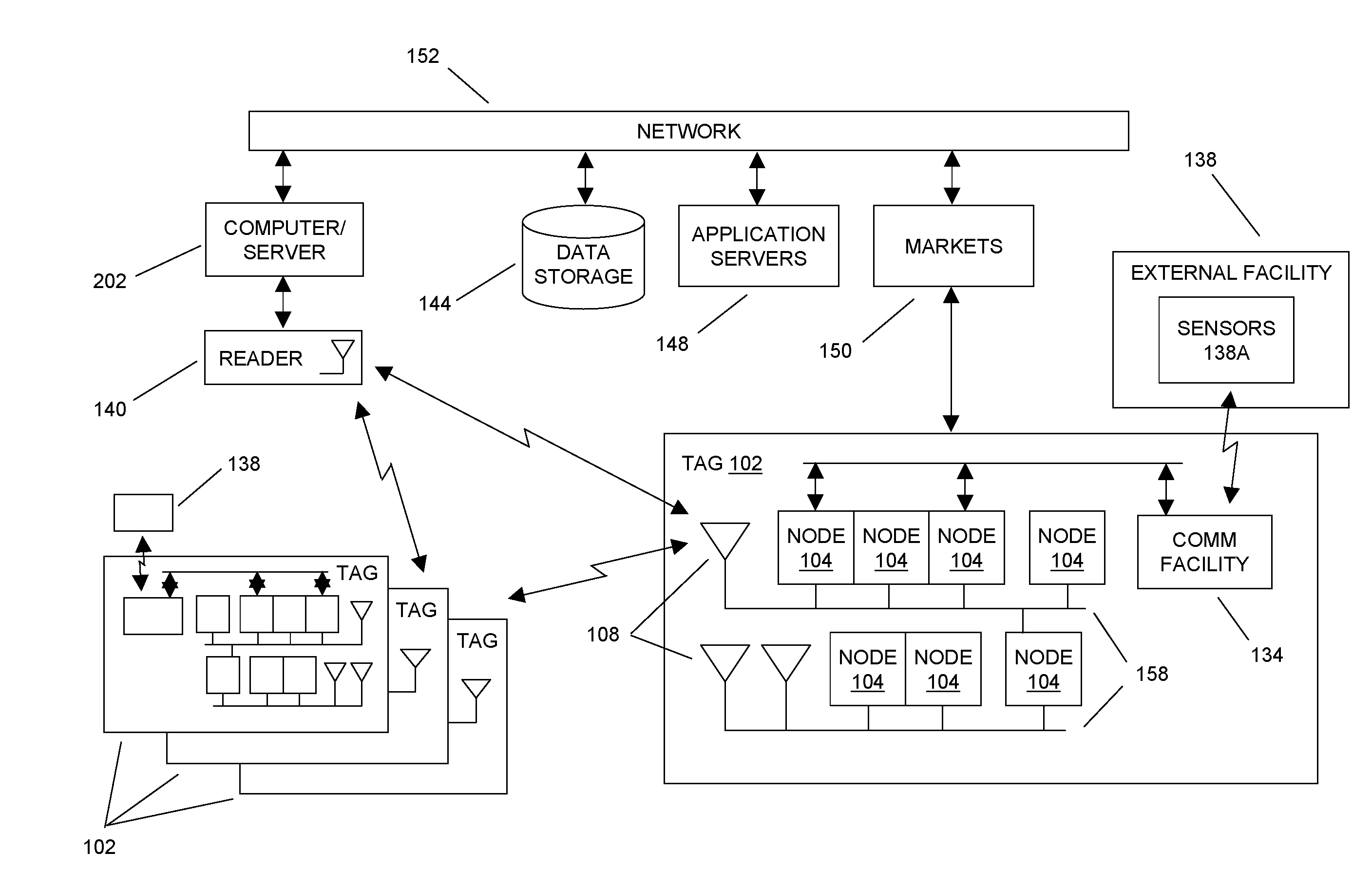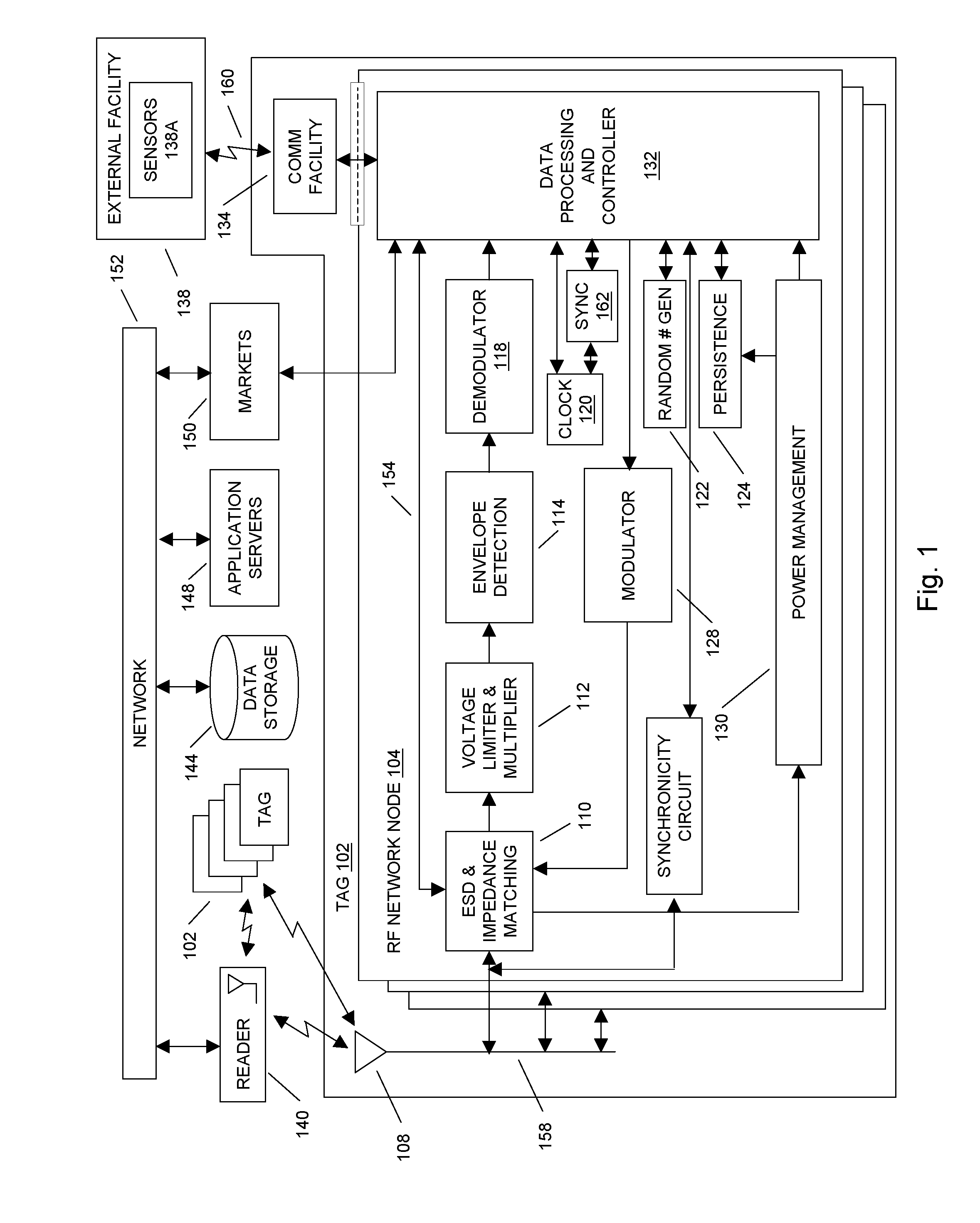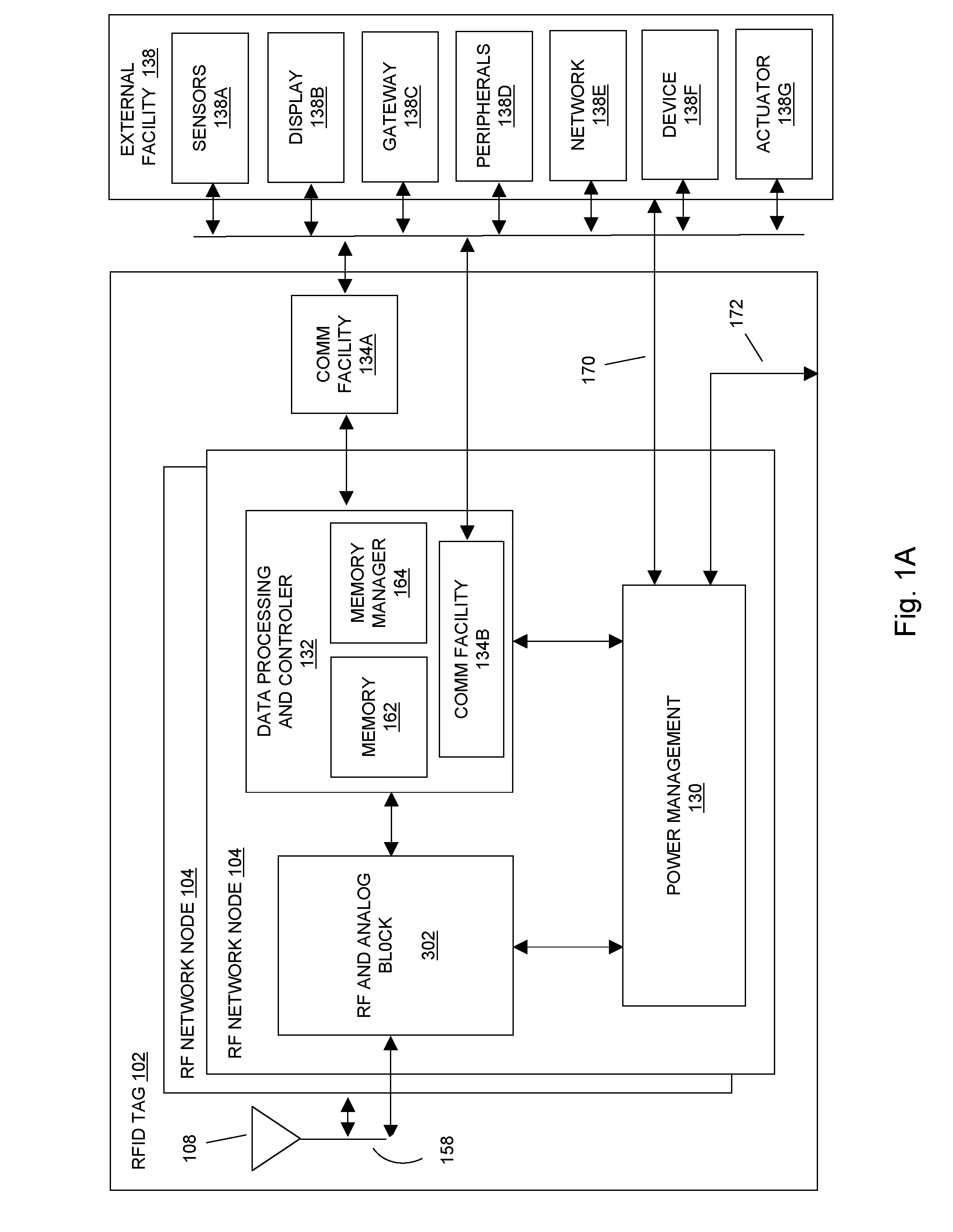RFID tag facility with access to external devices
a technology of external devices and rfid tags, which is applied in the field of radio frequency id (rfid) tags, can solve the problems of low bandwidth, high failure rate of data transmission, and performance problems of current rfid tags
- Summary
- Abstract
- Description
- Claims
- Application Information
AI Technical Summary
Benefits of technology
Problems solved by technology
Method used
Image
Examples
Embodiment Construction
[0049]In aspects of the systems and methods described herein, a radio frequency identification (RFID) tag may use multiple RF network nodes (e.g. radio microchips) to communicate information to a RFID reader, a network, other RFID network nodes, or the like. The communication of the information may be provided to the RFID reader using at least one antenna, using a communication facility, using both the at least one antenna and the communication facility, or the like.
[0050]In aspects of the systems and methods described herein, each of the multiple RF network nodes may include radio frequency circuits, digital circuits, memory storage, communication facilities, and the like for storing and transmitting information to RFID readers, networks, other RFID tags, markets, applications, data stores, and the like. The RFID tag may include circuitry for inter RF network node communication that may provide RF network node redundancy, increased functionality, improved connectivity to the reader...
PUM
 Login to View More
Login to View More Abstract
Description
Claims
Application Information
 Login to View More
Login to View More - R&D
- Intellectual Property
- Life Sciences
- Materials
- Tech Scout
- Unparalleled Data Quality
- Higher Quality Content
- 60% Fewer Hallucinations
Browse by: Latest US Patents, China's latest patents, Technical Efficacy Thesaurus, Application Domain, Technology Topic, Popular Technical Reports.
© 2025 PatSnap. All rights reserved.Legal|Privacy policy|Modern Slavery Act Transparency Statement|Sitemap|About US| Contact US: help@patsnap.com



